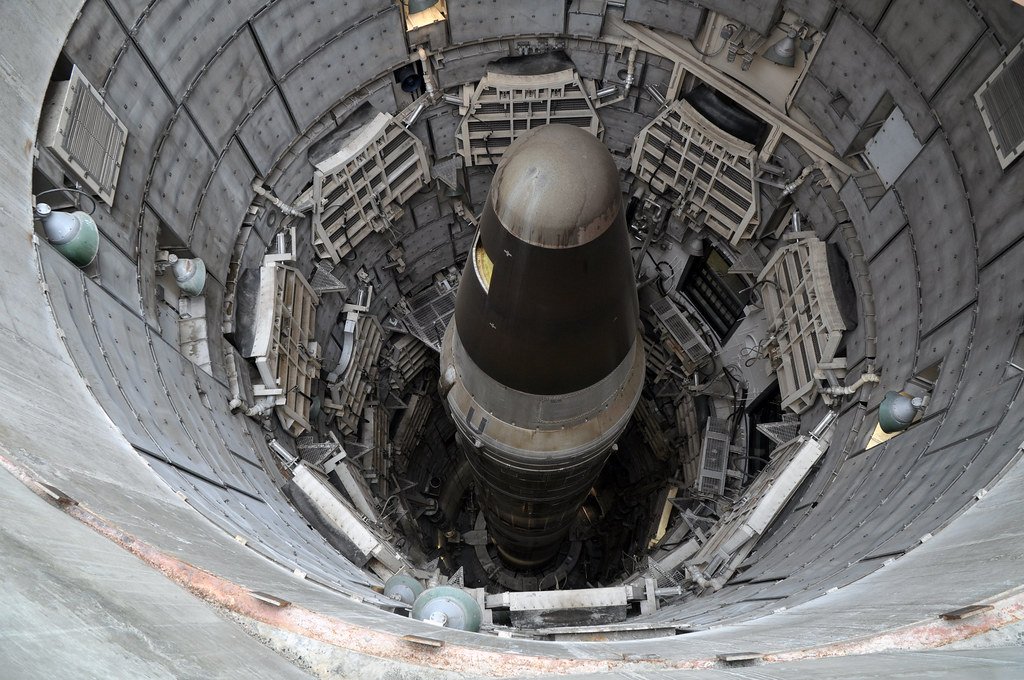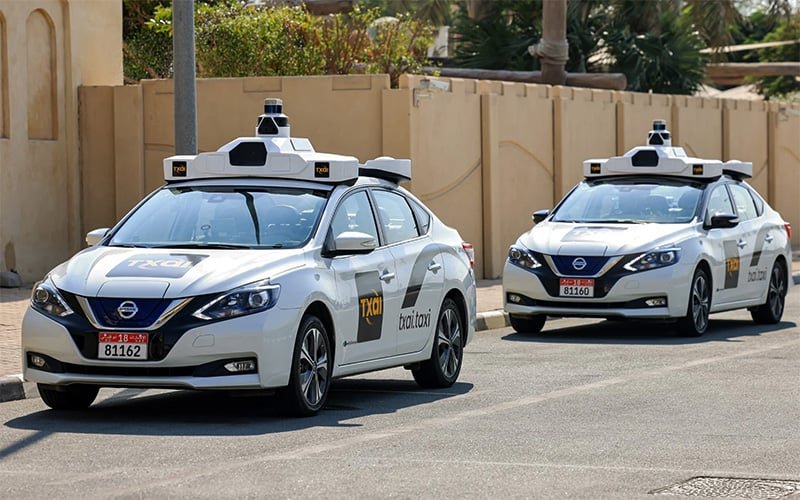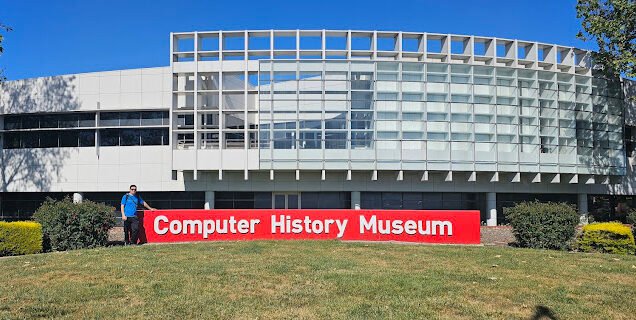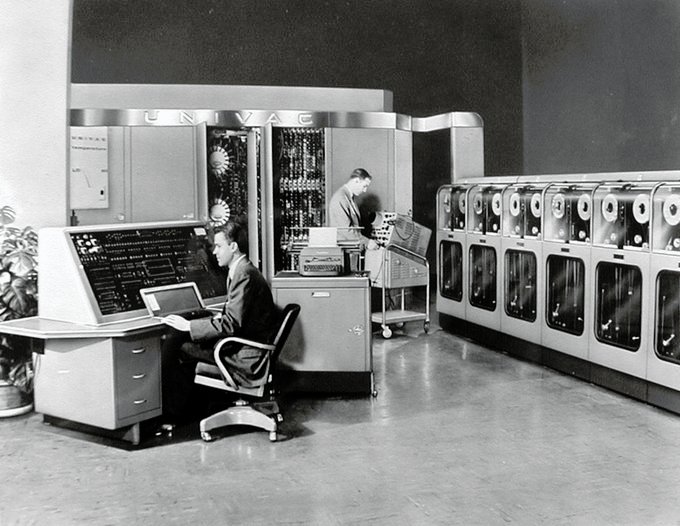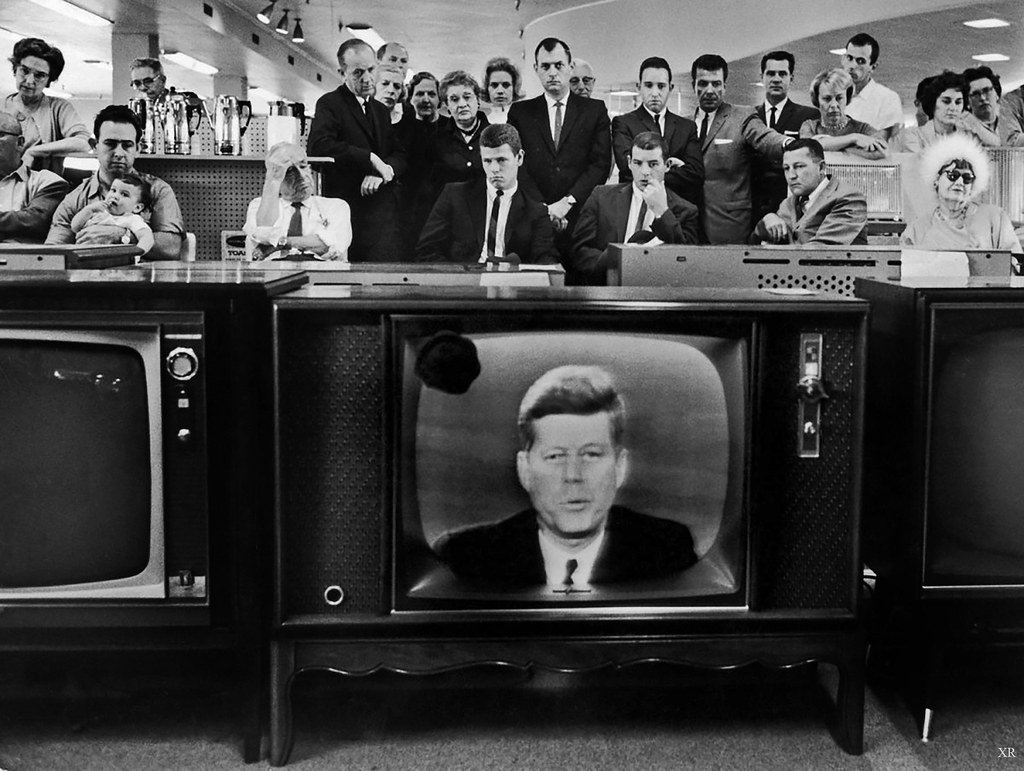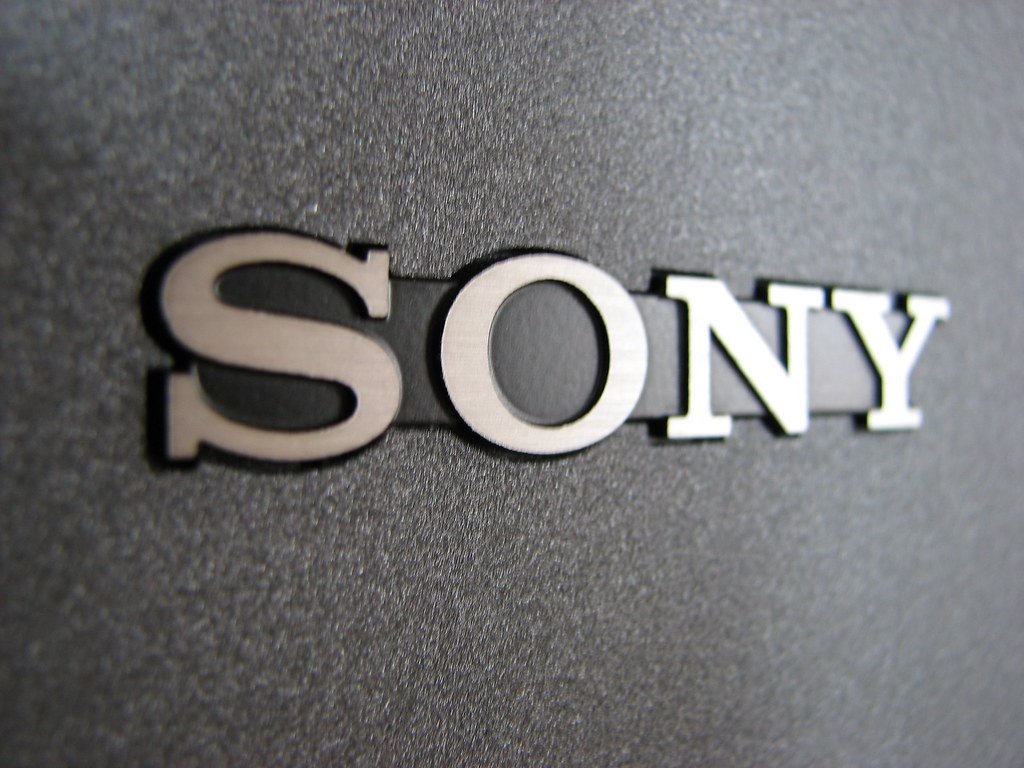Welcome to the heart of Silicon Valley, where the past meets the future at the Computer History Museum. Nestled in the technological epicenter of the world, this institution serves as a captivating portal into the fascinating world of computing and the relentless innovation that has shaped our modern lives. With a mission to preserve and celebrate computer history, this museum is a treasure trove for tech enthusiasts, history buffs, and curious minds alike.
The Computer History Museum, located in Mountain View, California, is more than just a collection of artifacts; it’s a journey through time, tracing the remarkable evolution of computers from their humble beginnings to the powerful devices we rely on today. This institution stands as a testament to the pioneers and visionaries who laid the groundwork for the digital age we now inhabit.
Silicon Valley, often referred to as the technological Mecca, is the ideal backdrop for such an endeavor. It’s the birthplace of countless innovations and technological breakthroughs, and the Computer History Museum perfectly encapsulates the spirit of this iconic region. As you step inside, you’ll be transported to a realm where the past and future intersect, and where the seeds of innovation sown in Silicon Valley continue to bear fruit.
The museum’s main exhibit, “Revolution: The First 2000 Years of Computing,” takes visitors on an awe-inspiring journey through computer History. From ancient abacuses and mechanical calculators to the era of mainframes and the dawn of personal computers, this exhibit presents a comprehensive narrative of how humanity harnessed the power of computation. It’s a testament to human ingenuity and our unyielding quest for progress.
But the Computer History Museum isn’t just a static display of artifacts; it’s an immersive experience. Visitors can engage with hands-on, Interactive Exhibits that bring computer History to life. You can witness a working replica of Charles Babbage’s Difference Engine, explore the Silicon Valley Innovation Gallery, and even see a demonstration of the IBM 1401, one of the earliest mass-produced computers.
Whether you’re a seasoned tech professional, a student curious about the roots of your favorite gadgets, or simply someone with an interest in the past and future of computing, the Computer History Museum has something to offer. Join us as we embark on a journey through time and technology, celebrating the remarkable evolution of computers that has shaped our world.
Table of Contents
What age is the Computer History Museum for?
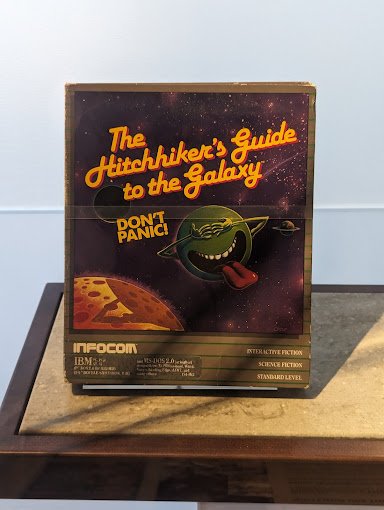
The Computer History Museum caters to a diverse audience of all ages. Its exhibits and offerings are designed to engage and educate visitors from children to seniors, making it a compelling destination for anyone with an interest in technology and history.
For younger visitors, particularly students, the museum provides an excellent opportunity to learn about the history of computing in an engaging and interactive way. It can inspire curiosity and interest in STEM (Science, Technology, Engineering, and Mathematics) subjects, potentially sparking future careers in the tech industry.
For adults, especially those who have witnessed the rapid evolution of technology in their lifetimes, the museum offers a chance to reminisce about earlier computing devices and appreciate the incredible progress made in the field.
Seniors who may have experienced the early days of computing can take a nostalgic trip down memory lane while also gaining a deeper understanding of the industry’s history.
In essence, the Computer History Museum is a multi-generational educational resource, fostering a greater appreciation for the Evolution of Computers and their profound impact on our lives, regardless of one’s age.
Who created the Computer History Museum?
The Computer History Museum was created through the collaborative efforts of dedicated individuals and organizations passionate about preserving and showcasing the history of computing. It can trace its roots back to the Digital Computer Museum, founded in 1975 by computer pioneers Gordon Bell and Allen Newell, along with support from the Digital Equipment Corporation (DEC).
Over the years, the museum evolved and expanded, eventually merging with the Computer Museum History Center (CMHC) in 1999. This merger brought together the resources and expertise of both institutions, solidifying its status as a premier institution dedicated to the history of computing.
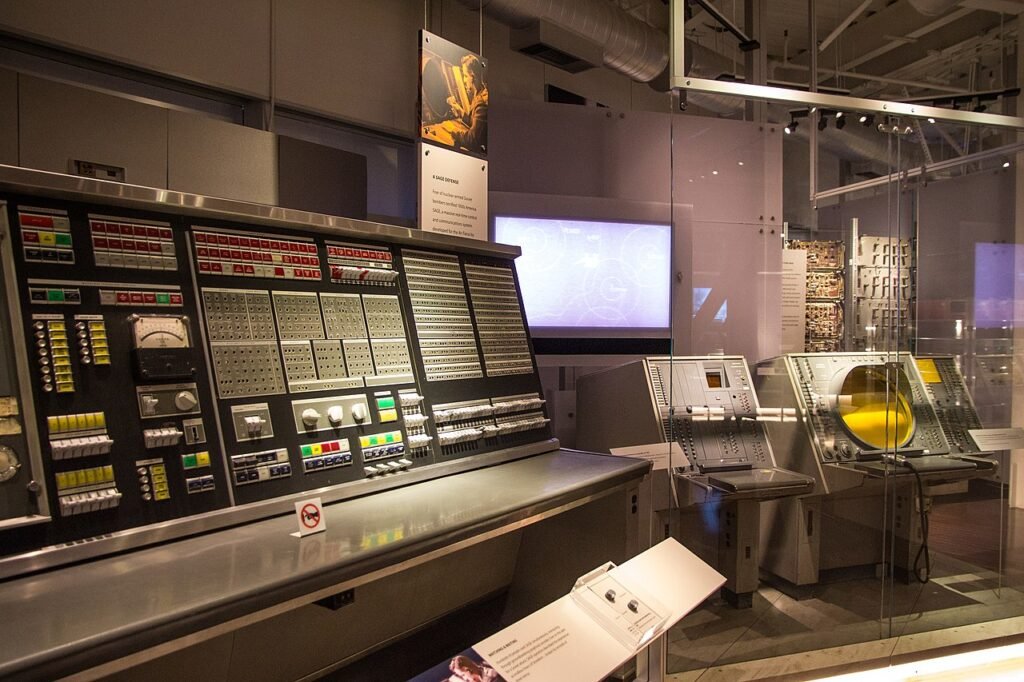
Today, the Computer History Museum operates as a nonprofit organization with a mission to “preserve and present for posterity the artifacts and stories of the Information Age.” It continues to receive support from various corporations, foundations, and individuals who recognize the importance of documenting and celebrating the evolution of computers and their profound impact on society.
What are the top 5 computer museums in the world?
The top 5 computer museums in the world, renowned for their significant collections and contributions to preserving the history of computing, are:
Computer History Museum (CHM), USA
Located in the heart of Silicon Valley, the Computer History Museum (CHM) stands as a global beacon of computing heritage and innovation. Boasting one of the most comprehensive collections in the world, CHM houses an extensive array of computing artifacts, including iconic machines, early calculators, and pioneering devices that have shaped the digital landscape. Visitors are treated to immersive experiences through interactive exhibits that showcase the evolution of computers, from ancient abacuses to cutting-edge technology. Beyond its impressive displays, CHM preserves invaluable historical archives, making it a vital resource for researchers, scholars, and enthusiasts eager to explore the rich tapestry of computer history.
Science Museum, London, UK
The Science Museum in London, UK, is renowned for its exceptional computing and technology collection, which serves as a testament to the profound impact of these innovations on human progress. Among its most iconic exhibits is Charles Babbage’s Difference Engine, a marvel of 19th-century engineering and considered the world’s first mechanical computer. Additionally, the museum houses the Cray-1 supercomputer, a symbol of high-performance computing from the 1970s. These artifacts, along with countless others, showcase the evolution of computing and technology, allowing visitors to trace the fascinating journey from the earliest computational devices to the cutting-edge technology that powers our modern world.
Deutsches Museum, Munich, Germany
The Deutsches Museum in Munich, Germany, is renowned for its extensive coverage of diverse scientific and technological disciplines. Within its vast collections, it houses an impressive array of historic computers, calculators, and early computing devices. Visitors to this museum have the opportunity to explore the evolution of computing technology, from the rudimentary calculating machines of the past to the sophisticated computers that have transformed modern society. It provides a comprehensive view of the role computing has played in scientific advancements, industrial progress, and everyday life. The museum’s dedication to preserving and showcasing these artifacts makes it a significant institution for understanding the history of computing.
Living Computer Museum, USA
The Living Computer Museum, nestled in Seattle, Washington, stands out for its unique approach to preserving computing history. Unlike many traditional museums, this institution specializes in the meticulous restoration and display of operational vintage computers. What sets it apart is its commitment to allowing visitors to do more than just observe; here, you can actively engage with these working machines. It’s a hands-on experience where you can interact with iconic computers, mainframes, and early computing devices, gaining a tangible understanding of the technology’s evolution. This immersive journey through the history of computing provides a rare opportunity to appreciate the pioneering efforts that have shaped the digital world we know today.
Computer and Communications Museum of Ireland, Dublin
The Computer and Communications Museum of Ireland, located in Dublin, is a dedicated institution committed to preserving and showcasing Ireland’s rich computing heritage. This museum is a testament to the country’s significant contributions to the field of technology. It houses exhibits that delve into the history of early computers, telecommunications, and the remarkable accomplishments of Irish scientists and engineers in shaping the global technological landscape. Visitors can explore the innovative spirit of Ireland and the pivotal role it has played in advancing computing, making it a must-visit destination for those interested in both the international and local history of technology.
These museums offer invaluable insights into the evolution of computing technology, from its humble beginnings to the digital age, and are essential destinations for anyone interested in the history of computers and technology.
Computer History Museum: A Comprehensive Visitor’s Guide
Visiting the Computer History Museum is a fascinating experience for anyone interested in the history of computing and technology. Located in Mountain View, California, in the heart of Silicon Valley, this museum offers a comprehensive look at the evolution of computers and their impact on society. Here’s a detailed guide to help you plan your visit:
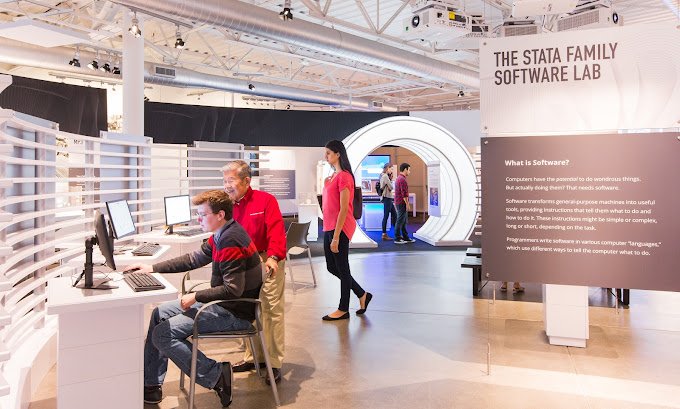
Location and Hours
The Computer History Museum is conveniently located at 1401 N Shoreline Blvd, Mountain View, CA 94043, USA, making it easily accessible to both locals and tourists in the heart of Silicon Valley.
Operating hours at the museum generally run from 10:00 AM to 5:00 PM on most days, providing visitors with ample time to explore the exhibits and immerse themselves in the world of computing history. However, it’s advisable to double-check the official website or contact the museum ahead of your visit, as operating hours can occasionally vary due to special events, holidays, or unforeseen circumstances.
Checking the official website is especially important for planning your visit as it ensures that you have the most up-to-date information regarding opening hours and any COVID-19-related safety guidelines that may be in place. By doing so, you can optimize your experience and make the most of your time exploring the fascinating evolution of computers and technology at the museum.
Admission Fees
Admission to the Computer History Museum is an essential consideration when planning your visit. It’s important to note that admission prices can vary, depending on factors such as age, student status, or membership. To ensure that you have the most accurate and up-to-date information regarding ticket prices, discounts, and any special offers, it is highly recommended to check the official website of the museum before your visit.
Furthermore, while the museum typically offers a general admission fee, visitors should be aware that some special events or featured exhibits might come with separate admission fees. These unique experiences often offer deeper insights or exclusive access to specific aspects of computing history, making them appealing options for enthusiasts.
By visiting the museum’s official website or contacting their visitor services in advance, you can plan your visit efficiently, budget accordingly, and make the most of any available discounts or bundled packages, ensuring a rewarding and memorable experience at the Computer History Museum.
Planning Your Visit
Visiting the Computer History Museum is a fascinating journey through the evolution of computing, but it’s important to plan your trip strategically for the best experience. One key tip is to be mindful of the museum’s popularity, especially on weekends and during peak tourist seasons. Silicon Valley is a major attraction for tech enthusiasts and history buffs alike, so it’s common for the museum to get quite crowded during these times. To maximize your enjoyment and avoid long lines, consider arriving early in the day. Early morning visits often offer a quieter, more relaxed atmosphere, allowing you to engage with exhibits more comfortably.
Furthermore, allocating a sufficient amount of time for your visit is crucial. The museum offers a wealth of information and interactive displays, and to explore it thoroughly, plan to spend at least 2-3 hours. This timeframe allows you to delve into the exhibits, engage with hands-on displays, and absorb the rich history of computing at a leisurely pace. Rushing through may cause you to miss out on some of the museum’s hidden gems and fascinating insights into the computer’s journey from its inception to the modern digital age. So, take your time and savor the experience.
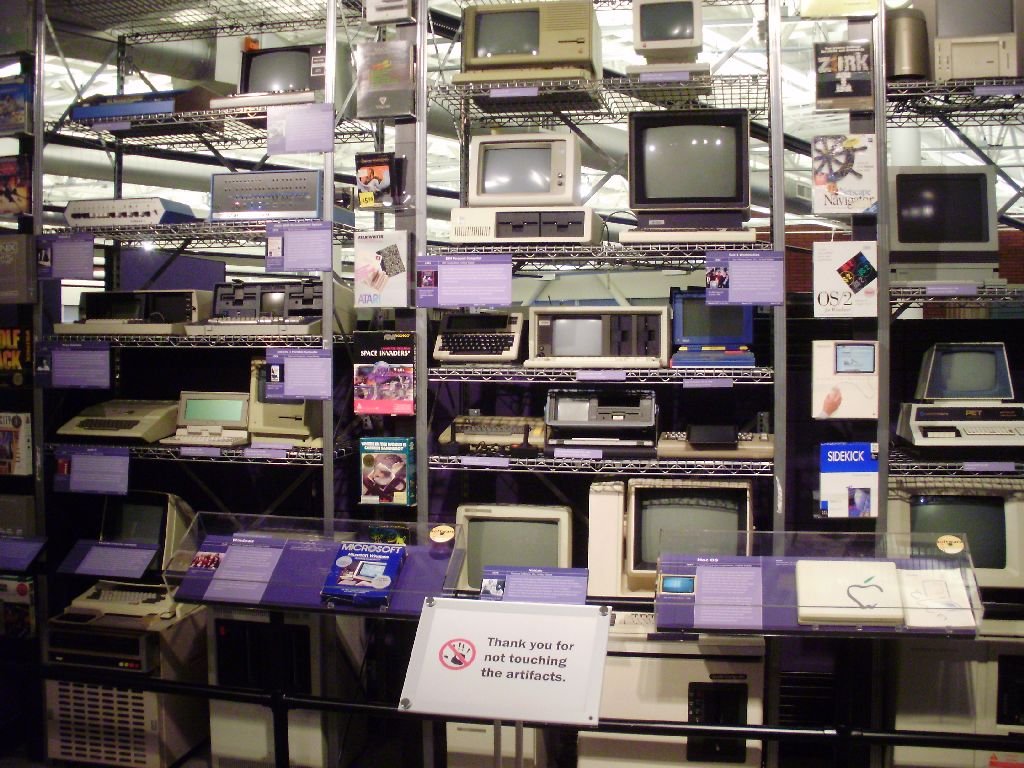
Exhibits and Highlights
The Computer History Museum in Mountain View, California, is a treasure trove for technology enthusiasts and history buffs, boasting a vast and diverse collection that encapsulates the entire history of computing. Among its many captivating offerings, several key highlights stand out:
- Revolution: The First 2000 Years of Computing
This flagship exhibit is the centerpiece of the museum, taking visitors on a mesmerizing journey through the Evolution of Computers. It spans from the rudimentary tools of ancient civilizations like abacuses to the cutting-edge smartphones and supercomputers of today.
- Babbage’s Difference Engine
An awe-inspiring attraction, the museum houses a fully functional replica of Charles Babbage’s groundbreaking mechanical computer, a precursor to modern computing.
- Silicon Valley Innovation Gallery
This exhibit celebrates the region’s rich technological heritage, allowing visitors to explore the history of Silicon Valley and the innovations that have defined the tech industry for decades.
- IBM 1401 Demo
Step back in time and witness a working demonstration of one of the earliest mass-produced computers, showcasing the hardware and software of a bygone era.
- Game Changers
For gaming enthusiasts, this exhibit showcases the evolution of video games and their profound impact on entertainment, from the early days of Pong to the immersive experiences of today’s gaming consoles.
These highlights, among many others, make the Computer History Museum an educational and engaging destination that offers a comprehensive understanding of the computing world’s past, present, and future. It’s a place where visitors can marvel at the technological strides made by humanity and appreciate the profound impact of computing on our daily lives.
Guided Tours
Taking a guided tour at the Computer History Museum can significantly enhance your visit by offering a deeper and more insightful understanding of the museum’s exhibits. These tours are typically led by knowledgeable docents who are passionate about the history of computing and technology. Here’s why you should consider taking one:
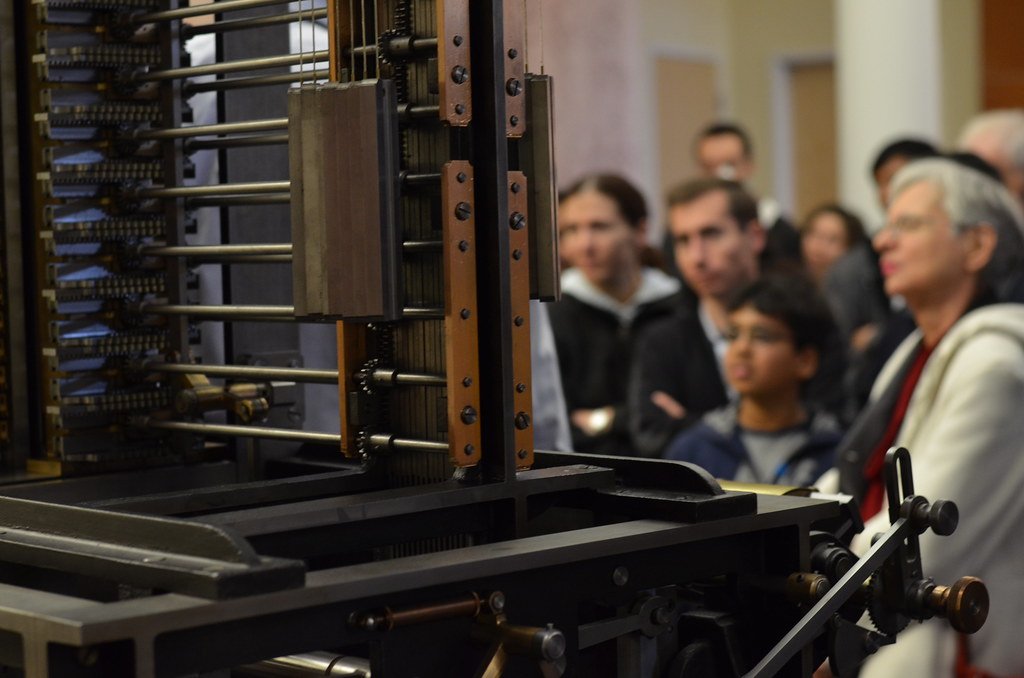
- Expert Insights
Docents are well-versed in the museum’s collection and can provide detailed insights, anecdotes, and historical context that may not be readily apparent when exploring on your own.
- Interactive Learning
Guided tours often include interactive demonstrations, allowing you to see vintage computers in action and gain a hands-on understanding of how they worked.
- Personalized Experience
Docents can tailor the tour to the interests and questions of the group, ensuring that you get the most out of your visit.
- Behind-the-Scenes Information
They may share behind-the-scenes stories about the museum’s artifacts, including how certain pieces were acquired and their significance in computing history.
- Engaging Stories
Docents bring history to life with engaging narratives and anecdotes, making the past come alive for visitors of all ages.
Overall, a guided tour at the Computer History Museum offers a richer and more immersive experience, making your visit not just informative but also memorable. Be sure to check the museum’s schedule for tour availability during your visit.
Interactive Exhibits
One of the most captivating aspects of the Computer History Museum is its commitment to providing an immersive and interactive experience for visitors. Many of the exhibits are designed to be hands-on, allowing guests to engage with computing concepts firsthand. This interactive approach sets the museum apart and offers a unique opportunity to not just learn about the history of computers but to actively participate in it.
Visitors can get a tactile feel for vintage computing devices, witness the inner workings of mechanical calculators, and even try their hand at programming on early computers. These interactive exhibits offer a profound understanding of how computing has evolved over the years, making complex technological concepts accessible and engaging for individuals of all ages and backgrounds.
By encouraging hands-on exploration, the museum fosters a deeper appreciation for the ingenuity and creativity that have driven the development of computers and technology. It’s a place where learning becomes an adventure, and visitors can gain a tangible sense of the profound impact computing has had on our world. So, when you visit the Computer History Museum, don’t hesitate to roll up your sleeves and dive into the interactive exhibits to truly experience the evolution of computing.
Special Events and Programs
When planning your visit to the Computer History Museum, it’s advisable to check the museum’s official website for the latest updates on special events, lectures, workshops, and temporary exhibits that may coincide with your visit. These additional offerings can greatly enhance your museum experience and provide deeper insights into the world of computing.
- Special Events
The museum frequently hosts special events that cater to a wide range of interests. These events might include guest speakers, panel discussions, product launches, and more. They often offer a unique opportunity to interact with experts in the field and gain a deeper understanding of the latest developments in technology.
- Lectures and Workshops
Lectures and workshops held at the museum can be both educational and entertaining. These sessions delve into various aspects of computer history, emerging technologies, and their societal impact. They are often interactive, allowing attendees to engage with the subject matter and ask questions.
- Temporary Exhibits
Temporary exhibits are dynamic additions to the museum’s permanent collection. They focus on specific themes, eras, or technological innovations and provide fresh perspectives on the history of computing. These exhibits rotate regularly, so it’s worth checking if there’s a temporary exhibit aligning with your interests.
By staying informed about these special events and offerings, you can tailor your visit to align with your interests and gain a more immersive understanding of the fascinating world of computing and technology. Be sure to check the museum’s website for schedules, ticketing information, and any pre-registration requirements for these activities.
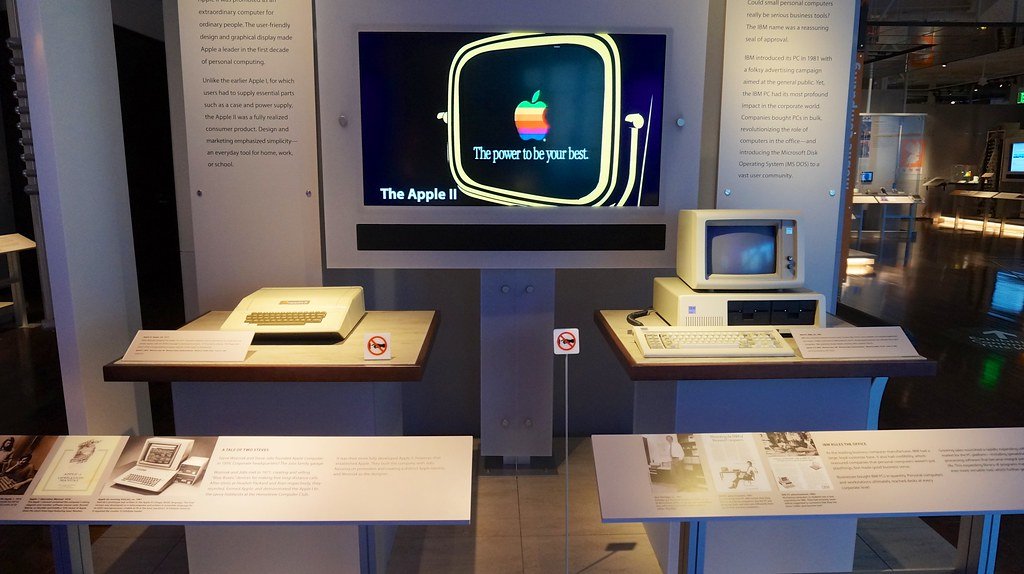
Accessibility
The Computer History Museum takes great care to ensure that all visitors, regardless of their physical abilities, can enjoy and engage with the exhibits. It is proud to be wheelchair accessible, offering ramps, elevators, and spacious pathways that facilitate easy navigation throughout the museum.
Moreover, the museum is committed to providing a welcoming experience for visitors with disabilities. Accommodations are available to cater to various needs, including accessible restrooms, seating, and captioning for multimedia presentations. Additionally, the museum staff is trained to assist visitors with disabilities and provide any necessary support to enhance their museum visit.
To ensure the best possible experience, it is advisable for visitors with disabilities to check the museum’s official website or contact them directly for specific accessibility information and any advanced arrangements that may be required. The Computer History Museum strives to make the world of computing history accessible to everyone, fostering an inclusive environment where all can explore the fascinating world of technology and innovation.
Visitor Services
The Computer History Museum offers more than just a journey through the annals of computing history; it also provides visitors with additional amenities to enhance their overall experience.
Firstly, the museum typically boasts a well-stocked gift shop. Here, you’ll find a diverse array of souvenirs related to computing and technology. From vintage computer-themed merchandise to educational books and quirky tech gadgets, the gift shop is the ideal place to pick up a memento to remember your visit by or find unique gifts for tech enthusiasts.
Additionally, if you find yourself needing sustenance during your exploration of the museum’s extensive exhibits, you’re in luck. Many museums, including the Computer History Museum, feature a café or dining area on-site. These establishments often offer a variety of refreshments, ranging from light snacks and coffee to more substantial meals. It’s a convenient option for a quick energy boost or a leisurely break, allowing you to recharge before diving back into the world of computing history.
So, whether you’re looking to commemorate your visit or refuel during your museum adventure, these on-site amenities add to the overall appeal and convenience of exploring the Computer History Museum.
Photography and Rules
Photography policies within the Computer History Museum can enhance your visitor experience while ensuring the preservation of the exhibits and the comfort of other guests. Generally, the museum allows photography, but it’s crucial to respect certain guidelines and verify current policies during your visit.
Photography can be an excellent way to capture memories and share your experience with others. You’ll likely encounter captivating artifacts, interactive displays, and thought-provoking exhibits that you’d like to document. However, it’s essential to remain mindful of the following:
- Respect for Exhibits
Avoid using flash photography or any equipment that may damage or cause wear to the exhibits. Some artifacts are sensitive to light and can deteriorate over time.
- Consideration for Others
Be mindful of fellow visitors. Refrain from blocking pathways or creating obstructions while taking photos, allowing everyone to enjoy the displays comfortably.
- Follow Museum Policies
If there are specific areas or exhibits where photography is prohibited, adhere to these guidelines to maintain the integrity of the museum’s collections.
By adhering to these guidelines, you can fully enjoy your visit to the Computer History Museum while contributing to the preservation of its invaluable artifacts and exhibits for future generations of technology enthusiasts.
Parking
Visitors to the Computer History Museum can typically enjoy the convenience of ample free parking available on-site. This feature greatly enhances the overall visitor experience, making it easy and stress-free to access the museum.
Given the museum’s location in Silicon Valley, where traffic can be notoriously congested, having free parking on-site is a significant advantage. It eliminates the need for visitors to search for nearby parking facilities or worry about parking fees, allowing them to focus entirely on exploring the museum’s exhibits and enjoying their visit.
Furthermore, the availability of on-site parking is especially beneficial for families and individuals traveling with young children, seniors, or anyone with mobility challenges. It ensures that access to the museum is as inclusive and accessible as possible.
Overall, the provision of ample free parking is a thoughtful and practical aspect of the museum’s visitor amenities, making it more inviting and convenient for people of all backgrounds and interests to explore the fascinating history of computing.
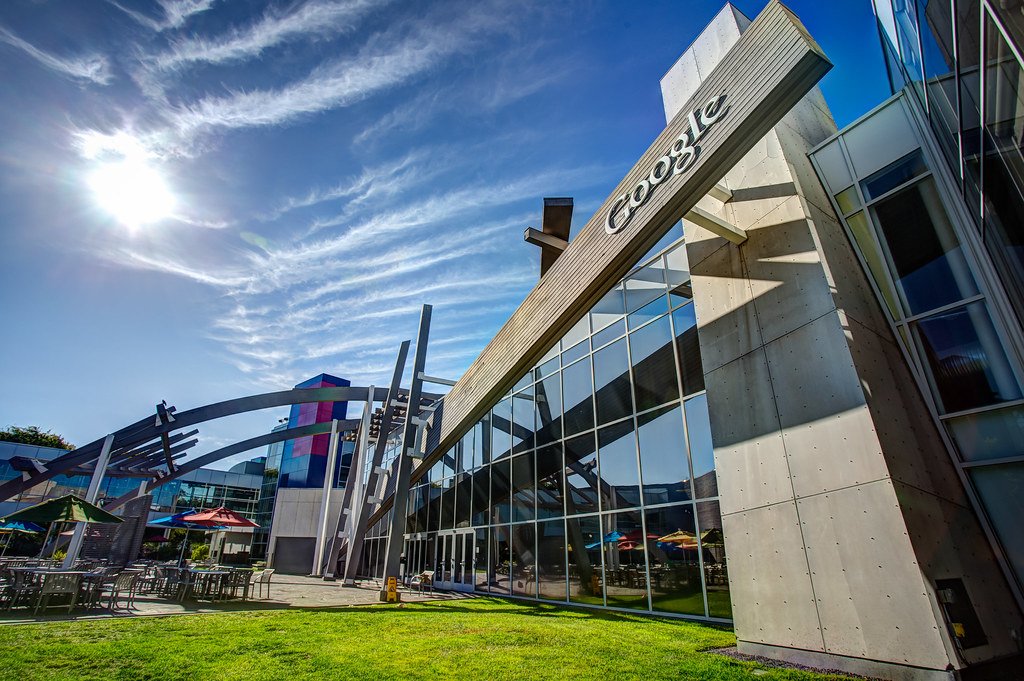
Nearby Attractions
While visiting the Computer History Museum in Mountain View, California, you’ll find yourself in the heart of Silicon Valley, a region teeming with technological wonders and natural beauty. Beyond the museum’s captivating exhibits, there are several nearby attractions that offer a well-rounded experience:
- NASA Ames Research Center
Just a stone’s throw away from the museum, the NASA Ames Research Center is a hub for cutting-edge space research and innovation. Visitors can often take guided tours to learn about the latest developments in space exploration.
- Googleplex
Venture a bit further and you’ll arrive at the Googleplex, Google’s iconic headquarters. While access to the campus may be limited, you can still appreciate its unique architecture and perhaps grab a coffee at a nearby cafe frequented by tech professionals.
- Shoreline Park
Nature enthusiasts will appreciate a leisurely walk through the nearby Shoreline Park. This picturesque park offers stunning views of the San Francisco Bay, walking trails, a lake for boating, and picnicking areas. It’s a serene escape from the tech hustle and bustle.
Exploring these attractions alongside your visit to the Computer History Museum allows you to immerse yourself in the Silicon Valley experience fully, blending technology, innovation, and the natural beauty of the area.
Before planning your visit, it’s advisable to visit the official website of the Computer History Museum to stay updated on essential details such as operating hours and admission prices. Ensuring you have the most current information will enhance your experience when you explore this extraordinary institution committed to the preservation and celebration of computing history.
The museum’s official website will provide you with valuable insights into any special exhibitions, events, or programs that may be taking place during your visit. Additionally, you can check if guided tours or educational opportunities are available to enrich your understanding of the exhibits further.
By staying informed through the museum’s website, you can effectively plan your trip, optimize your time, and fully immerse yourself in the captivating world of computing history. This proactive approach ensures that your visit is not only enjoyable but also educational as you delve into the evolution of computers and their profound impact on society.

